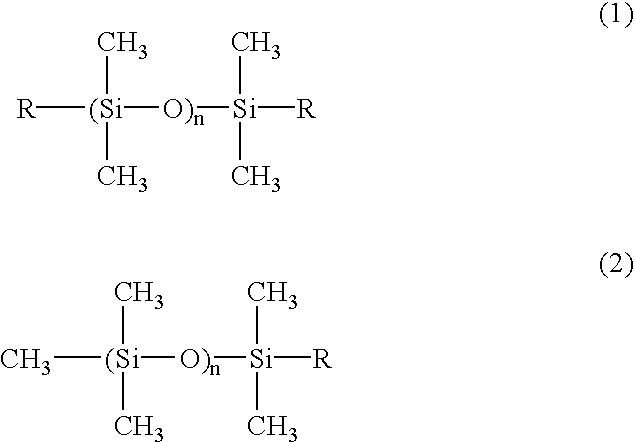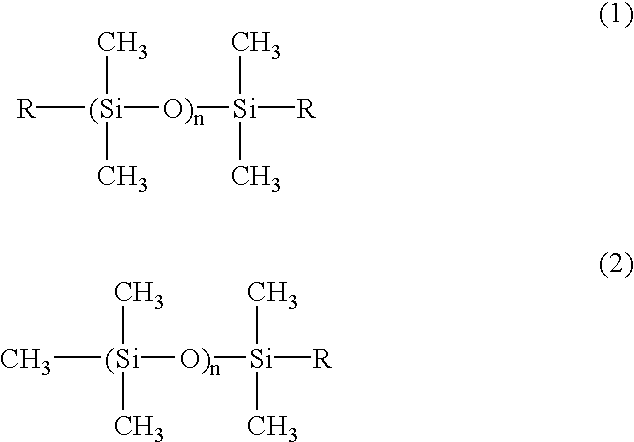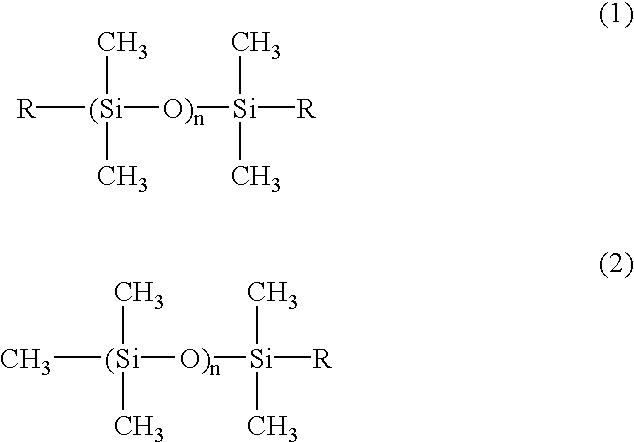Developing roller and method of producing the same
a technology of developing rollers and rolling pins, applied in the direction of liquid handling, applications, instruments, etc., can solve the problems of affecting the performance of the drum, and the volume resistivity value largely changes, so as to reduce the environmental dependence of the resistivity of the formed covering layer, the effect of increasing the flexibility
- Summary
- Abstract
- Description
- Claims
- Application Information
AI Technical Summary
Benefits of technology
Problems solved by technology
Method used
Image
Examples
example 2
[0062] A coating material B was prepared having the same composition as the coating material A of Example 1 except that no conductive carbon black was added. This coating material B was spray-coated onto a glass plate to a thickness of 10 .mu.m, air-dried, and heated to 160.degree. C. for 40 minutes to form a desired microporous covering layer.
example 3
[0063] A coating material C was prepared following the same procedures as in Example 2, except that 10 parts by weight of a carbinol-modified reactive silicone oil (X-22-16-A available from Shinetsu Chemical Industries, Japan; a silicone oil of the above-described formula (1) in which each R represents --C.sub.3H.sub.6OC.sub.2H.sub.4OH, and n denotes an integer of about 10) were further added, and the ratio of the volatile silicone oil to the total amount of the fluorine-containing polyol and the reactive silicone oil was adjusted to he the same ratio of the volatile silicone oil to the total amount of the fluorine-containing polyol in Example 2. A microporous covering layer was formed on a glass plate as in Example 2, using the thus prepared coating material C.
example 4
[0064] A glass plate having a microporous covering layer was prepared as in Example 3, except that the amount of the carbinol-modified reactive silicone oil was changed to 25 parts by weight.
PUM
| Property | Measurement | Unit |
|---|---|---|
| Thickness | aaaaa | aaaaa |
| Electrical conductivity | aaaaa | aaaaa |
| Ratio | aaaaa | aaaaa |
Abstract
Description
Claims
Application Information
 Login to View More
Login to View More - R&D
- Intellectual Property
- Life Sciences
- Materials
- Tech Scout
- Unparalleled Data Quality
- Higher Quality Content
- 60% Fewer Hallucinations
Browse by: Latest US Patents, China's latest patents, Technical Efficacy Thesaurus, Application Domain, Technology Topic, Popular Technical Reports.
© 2025 PatSnap. All rights reserved.Legal|Privacy policy|Modern Slavery Act Transparency Statement|Sitemap|About US| Contact US: help@patsnap.com



